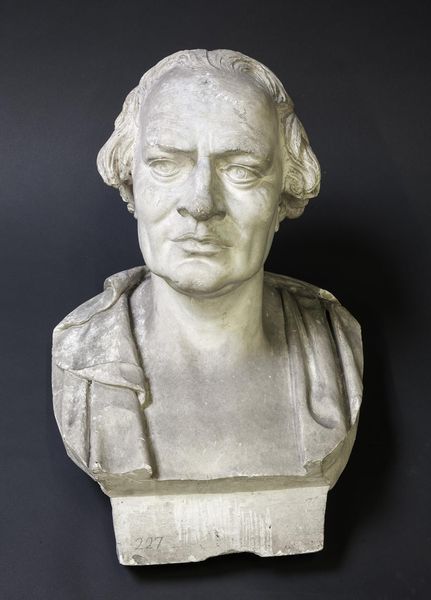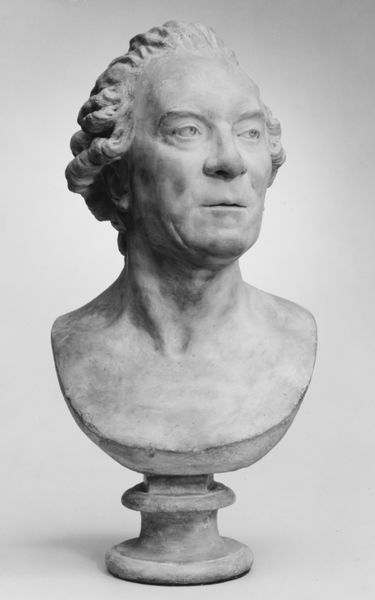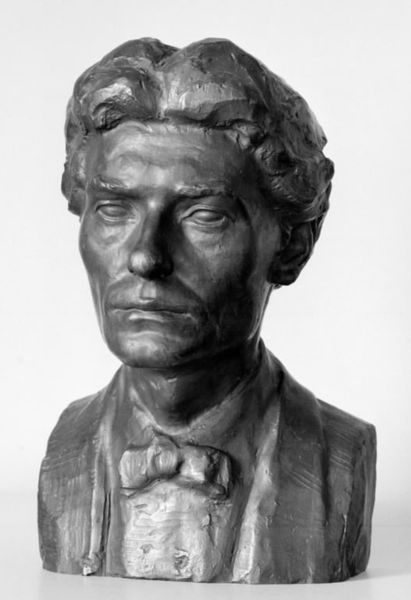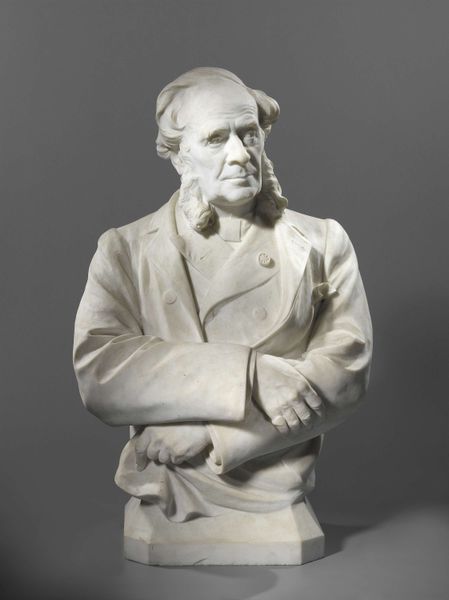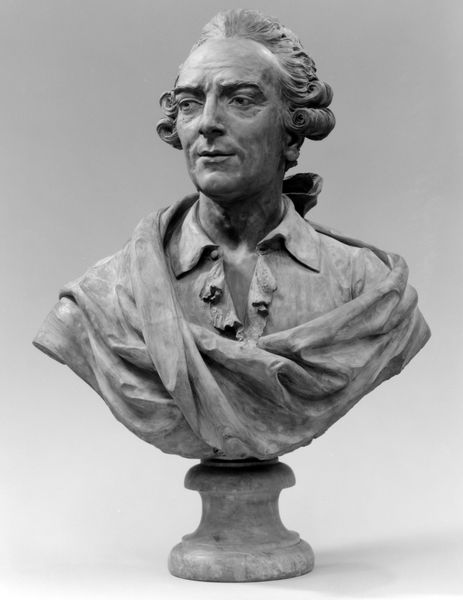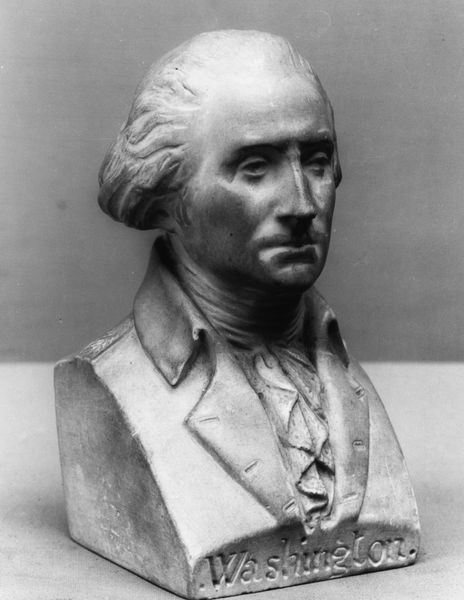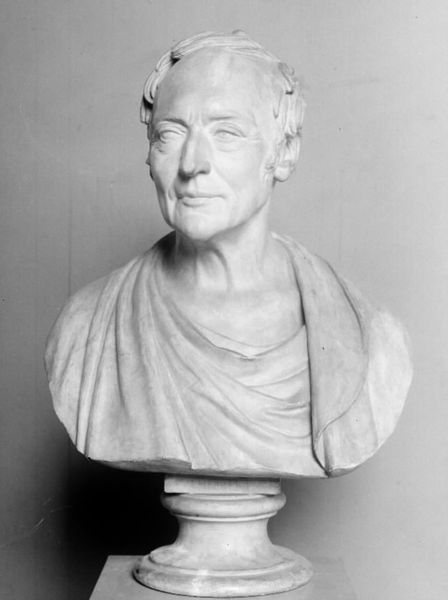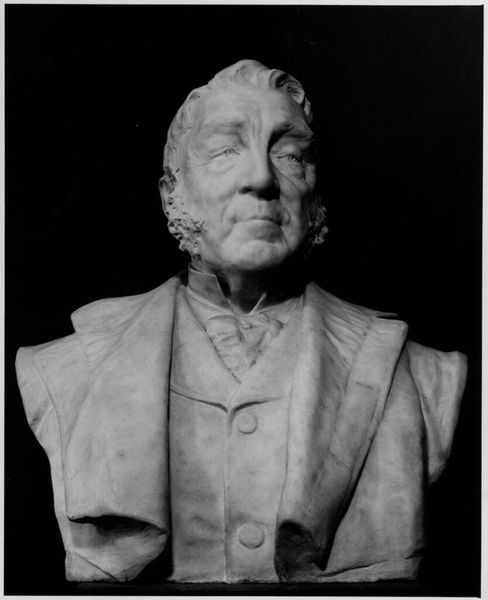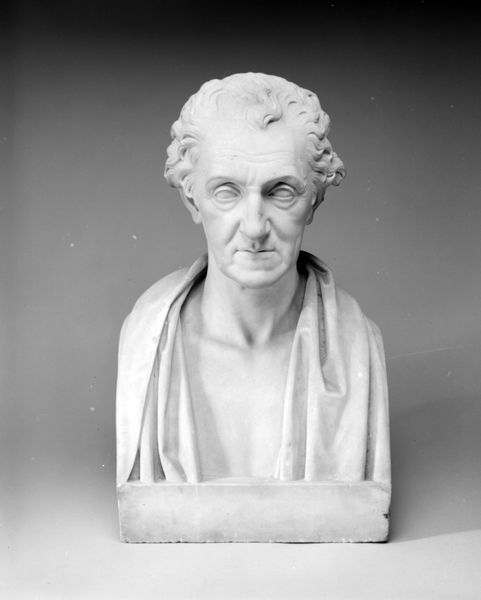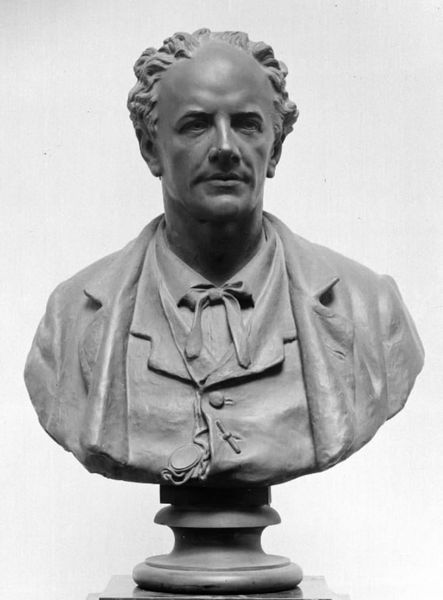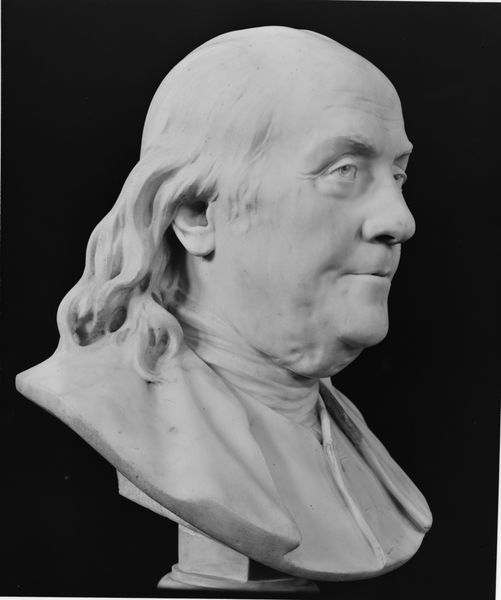
photography, sculpture
#
portrait
#
head
#
face
#
portrait image
#
portrait
#
close up portrait
#
frontview face
#
photography
#
male portrait
#
portrait reference
#
human face
#
portrait head and shoulder
#
sculpture
#
black and white
#
human
#
facial portrait
#
forehead
#
realism
#
monochrome
Copyright: Arno Breker,Fair Use
Curator: Here we have a photographic representation of Arno Breker's sculpture, "Richard Wagner." Editor: It strikes me immediately by its imposing presence. The sharp contrast of light and shadow gives the piece a weighty feel, an almost palpable sense of the materiality from which it’s wrought, presumably plaster. Curator: Indeed. Considering Breker’s close ties to the Nazi regime, this bust is steeped in historical and political complexity. Wagner himself was a figure embraced by the Nazis, and this work, though a portrait, can’t be divorced from its propagandistic implications. The aesthetic choices and Breker's positionality demand interrogation. Editor: Absolutely, the materiality speaks volumes. Plaster is so easily worked, relatively inexpensive. It’s suggestive of mass production, and maybe here evokes something more insidious about the availability of such cultural imagery during a time of heightened nationalism and fascist manipulation. Was it made during the Third Reich? The labor is another critical dimension; whose hands shaped this ideal? Curator: While the precise date remains unknown, understanding the broader socio-political context is essential. We need to consider how identity, race, and even perceived genius were constructed and exploited in Nazi ideology. Editor: The emphasis on realistic detail is really something too; look at those furrows in the brow and lines on the face. There's an almost aggressive intensity captured in his expression; perhaps its function was as an emblem, an affirmation of a mythologized vision of German identity and artistic heritage. How was the photographic process part of the narrative, the process through which it became iconic? Curator: Right. The deliberate realism aestheticized not just Wagner as a person, but an entire belief system. Considering Breker’s commission by the Nazi elite, the creation of "Richard Wagner" contributed to a dangerous narrative, essentializing national identity and cultural superiority that was integral to Nazi ideology. It encouraged an audience to accept racial purity myths, linking aesthetics to politics. Editor: Seeing it now, thinking about how easily plaster lends itself to reproduction... it's haunting to consider how effectively such art normalizes ideologies and solidifies harmful views on race and identity through its material existence and dissemination. Thank you. It will stick with me for a while. Curator: The power of this image comes precisely from unpacking the disturbing histories embedded within seemingly simple, and aesthetically well-done, artistic representation. It reminds me of the importance of not just acknowledging, but actively challenging systems of oppression that this kind of work sought to uphold.
Comments
No comments
Be the first to comment and join the conversation on the ultimate creative platform.
